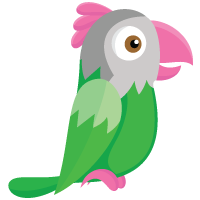Is tawk.to WCAG compliant?
The tawk.to chat widget is built with accessibility in mind and aligns with the Web Content Accessibility Guidelines (WCAG). The widget meets WCAG Level A and satisfies several Level AA success criteria.
What WCAG means
WCAG is an internationally accepted set of technical guidelines from the W3C that explain how to make web content accessible to people with a wide range of disabilities. WCAG success criteria are grouped into three levels (A, AA, AAA). Level A covers basic accessibility; Level AA adds more robust, practical requirements that most organisations aim for.
How this applies to the tawk.to widget
We’ve implemented accessibility features in the chat widget, helping to make the widget usable by people who rely on assistive technologies or who need different visual/interaction options:
Screen-reader support and descriptive alt text for non-text elements so assistive technologies can describe the interface.
Keyboard-friendly navigation — users can open, navigate, and interact with the widget using a keyboard alone (important for people who can’t use a mouse).
Sufficient text and non-text contrast and use of shapes/labels so information isn’t conveyed by color alone.
Resizable text — widget text can be enlarged (the widget supports up to 200% text scaling without loss of content or function).
Responsive orientation — the widget adapts to portrait and landscape layouts, helping mobile and tablet users.
Important:
The widget itself is designed to be accessible, but the final accessibility experience depends on the content and customizations you add (labels, messages, images, color choices, etc.).
Tips to make your chat experience accessible
Use clear, descriptive text and labels
Give form fields and buttons clear, human-readable labels so screen readers and keyboard users understand each control. Avoid relying on placeholder text as the only label.
Check color contrast
Ensure text and interactive elements meet recommended contrast ratios (WCAG Level AA recommends a minimum 4.5:1 for normal text). Use contrast-checking tools and adjust your widget colors if needed.
Enable and configure the consent form (where relevant)
If you collect personal data or need to meet region-specific privacy rules, turn on and customise the widget’s consent form so users can make an informed choice before the widget sets cookies or collects data. Learn more here: Enable and manage your consent form
Test with assistive technologies
Try common screen readers (NVDA, VoiceOver) and keyboard-only navigation to confirm your widget content and flows are usable. Test on desktop and mobile orientations.
Avoid conveying meaning by color alone
Use icons, labels, or patterns in addition to color to indicate status, errors, or required fields.
Keep messages concise and structured
Short, well-structured messages with clear headings or separators help users who use screen readers or have cognitive accessibility needs.
Regularly review custom content
Any text, images or links you add to the widget must follow accessibility best practices (alt text for images, readable language, accessible links).
Additional considerations
WCAG conformance is holistic
A single widget can be accessible, but overall site conformance depends on every page and component meeting the WCAG success criteria. Use automated checks plus manual testing with people and assistive tools.
Legal and policy differences
Laws and regulations referencing WCAG (for example, government procurement rules or national accessibility laws) vary by country. Meeting tawk.to’s widget accessibility features does not by itself guarantee legal compliance for the whole site — you should audit the full site if legal conformance is required.
Performance & customization trade-offs
Heavily customised designs or third-party content added into the chat may introduce accessibility issues — test any custom code or embeds you add.
Performance & customization trade-offs
Heavily customised designs or third-party content added into the chat may introduce accessibility issues — test any custom code or embeds you add.
Related guides
If you have feedback about this article, or if you need more help:
Click the green live chat icon
Schedule a call with us
Visit our community
